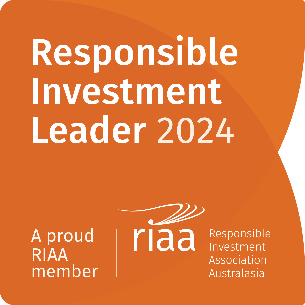Green shoots in Australian housing?

7 June 2019
House prices rising too quickly can cause a lot of social stress, as we have seen in New Zealand. On the flip side however material price falls can cause economic stresses that can have wide ranging impacts including lower GDP growth, less job security, a reluctance by banks to lend, lower consumer and business confidence and even a change in voting patterns. The current decline in house prices across Australia’s capital cities has been brutal. Not only is this the third longest housing cycle downturn since the early 1980’s, but more importantly this cycle has had the sharpest price falls. Recent figures have shown average Sydney prices down by nearly 14% from their peak whilst Melbourne is off by almost 11%; in some cases suburbs and apartments have fallen by well over 20%. Although these adjustments pale in comparison with the price corrections that we saw during the GFC in countries such as the US (which crashed by 32%) or Ireland (which fell by 55%), this negative momentum in Australia has been problematic. Prior to the housing market correction, the Australian economy grew by an annualised rate of 3.8% in the first-half of 2018 but in the following 6-months that growth fell to just 0.9%, the lowest since the depths of the GFC. This challenge has not gone unnoticed and encouragingly, from an investment perspective, policy makers are responding as have the voters.
The most significant event that occurred in Australia during May was the federal election. In defiance of all the recent polls, Scott Morrison led the Liberal-National coalition to victory and secured a majority government. In trying to determine whether this outcome should be viewed positively or negatively from an economic perspective, we cannot look past those sectors which performed best on the Australian Stock Exchange the following day. It was the Banks, the Retailers and those exposed to the housing market. The Coalition’s success was welcomed by those who believe that the outcome will result in friendlier business policies, tax cuts and, in particular, support for property prices (in the form of financial help for first home buyers and no changes being made to the treatment of negative gearing). Similar to New Zealand, the state of the Australian housing market is critical to the overall economic growth experience and this election outcome was the first in a trifecta of events that have recently occurred which may be supportive of prices.
The second event came in the form of a change by the regulator, the Australia Prudential Regulation Authority (APRA). Until very recently APRA had looked to reduce the flow of credit to households by forcing the Australian Banks to stress-test all mortgage applications on the grounds of serviceability, assuming a 7% interest rate. This is a very conservative assumption given that the advertised rate on most 2-year housing loans is currently around 3.8%. APRA will now allow banks to set their own stress-test rates (with a buffer of 2.5%), a policy shift that will increase effective borrowing capacity and has been welcomed by both lenders and borrowers.
The final event of influence that occurred during the month was a shift in expectations around where the RBA will take the official cash rate over the next year. Governor Philip Lowe delivered a speech where he strongly indicated that an interest rate cut was on the cards and at their meeting on June 4 this expectation was met, when a cut of 0.25% was announced. The RBA’s official rate is now at 1.25%, but due to core inflation currently tracking lower and their observation that a sub-5% unemployment rate is now required to achieve an inflation outcome consistent with target, the market has moved to price in multiple cuts over the next 12-months. A number of economic commentators have suggested the cash rate could now go as low as 0.5%. To put this in perspective, during the GFC the lowest level this rate was set at was 3.0%. If passed on fully by the banks, a half percentage cut in rates would reduce the repayments on a $500,000 mortgage by $200 per month.
Despite these changes, the bearish case for property is still finding support from some commentators. The arguments that continue to be made are that house prices are still elevated, affordability is poor, debt remains at problematic levels and that with sluggish economic conditions, unemployment is likely to deteriorate. These arguments are factually correct but property is like all other asset classes in that demand and pricing dynamics are not limited to that current state but rather they reflect views of the future. In the case of Australian property that future has just received some very necessary support.
Encouragingly the New South Wales and Victorian property markets are already showing early signs of improvement. In the first weekend post the federal election, auction clearance rates in Sydney and Melbourne were recorded as 69.9% and 62.2% respectively. This has been well received given that analysts historically have considered a range of 50% to 55% as representative of conditions associated with price stability. In the past 12-months clearance rates were recorded as low as the early 40’s% for these key markets.
Although we will have to wait and see whether a sustainable recovery in Australian house prices is imminent, what is clear is that policy levers are being pulled and the probability of an improvement in this area has, at the very least, increased. The performance of those stocks which are tied to this outcome are certainly suggesting this is the case.
For us here in New Zealand, we are watching this situation with great interest. Australia is our second largest trading partner and our capital markets are closely linked. Our property markets also have a habit of moving in broad concert. With our own economic prospects looking increasingly fragile, the Australian experience serves as a useful case study.





